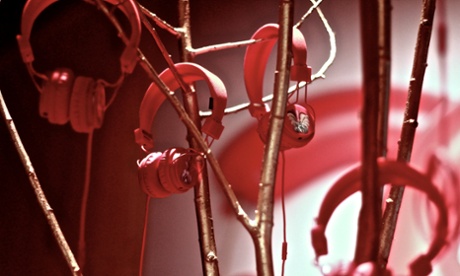
When Apple introduced its smartwatch, the company borrowed an approach from fashion brands and offered an array or prices, styles and sizes.
Zound Industries is making a similar transition but in reverse, expanding from its UrbanEars and Colour headphone brands into smartphones. Planning to launch its first at the Consumer Electronics Show in Las Vegas in January 2015, Zound is attempting to repeat the success it has had - along with companies including Apple-owned Beats - in turning headphones from a functional accessory into a fashion brand.
The move from audio products to smartphones is driven by the observation that smartphones have reached the same level of commodification that headphones reached in the mid-noughties, Zound president Konrad Bergström explains. Further gains in the market won’t be made by marginal improvements, he believes, but by adapting products to meet the needs of particular niches and fashion trends. One size - the Apple approach - no longer fits all.
“Eight years ago, when you were choosing your sneakers and the right shirt and then you just put on your ugly headphones,” said Bergström. “You didn’t think about it, because the headphones showed that you liked music. And then when someone started to work with it and then make nice headphones that were more in line with design… then all of a sudden everybody started to say ‘oh, I can’t wear these headphones because they don’t look cool’.”
The other factor pushing Zound towards the smartphone sector is the commodification of the industry, leading to a situation where Bergström describes the majority of smartphones on the market as “good enough”.
“You’re looking at a consumer, and thinking ‘how do you get the consumer the best user experience’. All these things, with like 4K blah blah blah, and a gigabyte here and there: the phone works, you know? A lot of people keep their iPhone now until it’s dead, but before, it was clearly a huge leap. Technology stagnated.”
Speaking at an event held by technology investment bank GP Bullhound, Bergström described his own company’s technology as “very functional, but pretty low,” but says that focus on R&D for the new phone is paying off “with innovations in software and hardware.”
Zound has four brands in the headphone market. UrbanEars, the biggest, is a mid-point range; Coloud offers a cheaper alternative; Marshall, a brand licensed from the venerable amplifier company, serves the high end of the market; and Molami is an ultra-high-end female-focused range. The company’s first smartphone will follow a similar segmentation, said Bergström.
“When you start to work in the fashion segment, brands always go up and down. It’s not only about technology, it’s a combination of technology and brand and design. It’s really really hard to keep a brand on the top all the time, and it’s also really hard to have a low-price segment and luxury segment in the same brand.”
The risk for the company will be falling into the trap of other “design-focused” smartphone manufacturers, such as British firm Vertu, whose phones make up what they lack in critical acclaim with an eye-watering price tag.
“I would buy an iPhone before a Vertu,” Bergström says, “but I think they haven’t looked at user experience. We are not looking to have a super-expensive price. Look at our price range, we always work with a bang-for-the-buck ideology, and we’re going to keep doing that.”
Further into the future, the company is also considering expanding into wearables, a term Bergström bridles at, saying “for me, wearables is also headphones. They found out a new word, like ‘IT’ in the 90s.”

